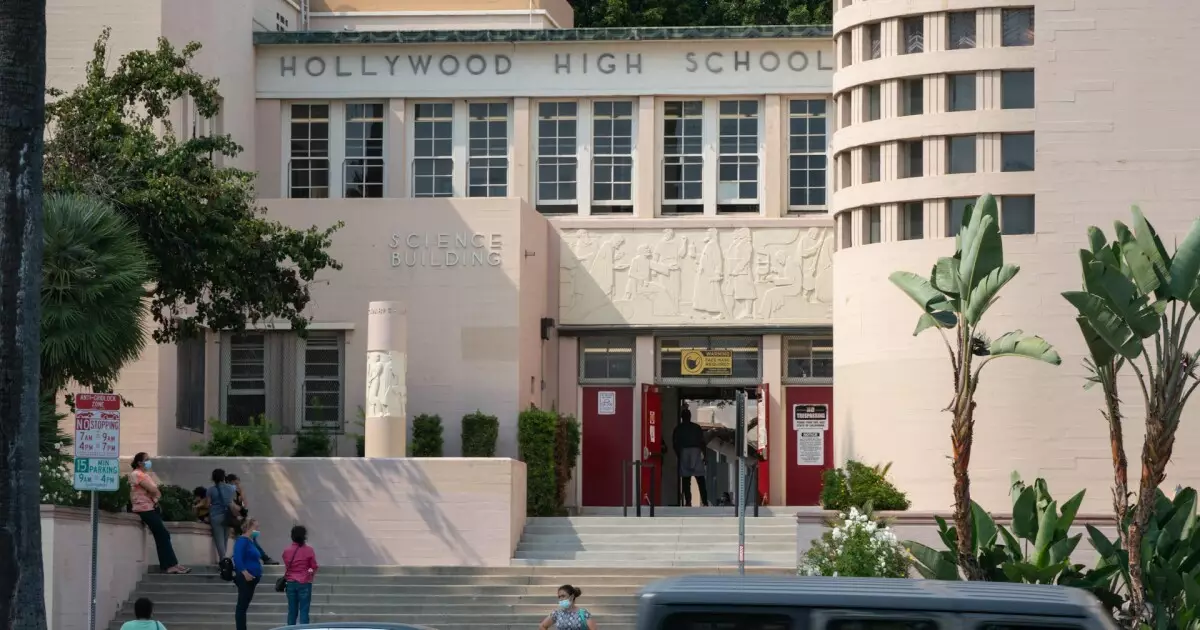The Los Angeles Unified School District (LAUSD) is poised to make a significant splash in the municipal bond market with its upcoming issuance of $1.1 billion in general obligation bonds. Slated to hit the market on Wednesday, this provision aims not only to alleviate funding requirements for the school district but also to bolster sustainable initiatives. With RBC Capital Markets spearheading the deal, the bond pricing is expected to generate considerable interest, particularly following the Federal Open Market Committee’s recent decision to cut interest rates by 50 basis points.
Timothy Rosnick, LAUSD’s director of capital planning and budgeting, expressed optimism regarding the market’s reception of these bonds. His assertion is grounded in the district’s strong historical performance in navigating its building programs. Investors have demonstrated a willingness to engage, in part due to the relative scarcity of competitive offerings in the California bond market at present. This week marks a significant surge in the municipal primary market, featuring several high-stakes bond deals, including an $800 million offering from the California State Public Works Board—the largest in-state competition for LAUSD.
A distinctive feature of LAUSD’s bond issuance is its sustainability label, certified by Kestrel, an independent third-party evaluation firm. This designation underscores the district’s commitment to green initiatives that align with the International Capital Market Association’s standards for green bonds. It indicates that the bond proceeds will primarily fund projects aimed at transforming school facilities into energy-efficient, sustainable environments.
Addressing Economic Disparities and Sustainability Goals
LAUSD’s unique standing as the second-largest school district in the nation—and notably one serving a significant population of economically disadvantaged children—has substantial implications for its bond issuance. While this demographic need creates urgent budgetary demands, it also qualifies the district for additional state and federal funding. Thus, the sustainability components of the bond deal could paradoxically provide both opportunities and challenges.
The overarching goal of the bond projects is to transition to net-zero energy facilities, mitigating environmental impacts while also improving educational environments. The initiative includes modernizing a significant number of aging school infrastructures, reflecting LAUSD’s commitment to creating equitable learning opportunities for its diverse student body, many of whom are English learners. Over the years, the district has used voter-approved bonds—initiated as far back as 1997—to steadily improve facilities in response to both overcrowding and infrastructural decay.
LAUSD’s emphasis has shifted markedly from merely constructing new schools in the late ’90s to modernizing existing facilities. Rosnick noted this evolution as necessary to accommodate contemporary learning needs and enhance college and career preparedness. The core highlight of this transition can be witnessed in the impending $9 billion Measure US, which seeks additional funding for school modernization and safety improvements. This assessment illustrates how LAUSD is not just responding reactively but actively strategizing long-term improvements to enhance educational outcomes.
Additionally, ongoing discussions surrounding a colossal $27 billion school building program suggest that LAUSD has embarked on a transformative journey. This dollar figure, while daunting, represents a systematic approach to addressing long-standing educational deficiencies and preparing the district for future demands.
Following a backdrop of increasing engagement with municipal bond markets and heightened credit ratings, LAUSD appears to be on solid financial footing. Recent affirmations from major rating agencies such as Moody’s and Fitch highlight an improved financial landscape for the district. Moody’s has recognized enhancements in the district’s general fund balance, directly attributed to strategic adjustments in spending, which reflect a prudent response to a backdrop of declining student enrollment and fiscal challenges.
Fitch’s assignment of a AAA rating underscores their confidence in the district’s fiscal responsibilities, emphasizing that California school districts maintain robust statutory protections. This stability provides insurance to investors, reducing potential risks associated with bond investments and boosting LAUSD’s standing in the municipal bond market.
In summation, the LAUSD’s upcoming bond offering represents a multifaceted initiative that merges sustainability with a robust commitment to modernizing educational facilities. The interplay between maintaining investor confidence, addressing socio-economic challenges, and striving for environmental responsibility showcases the district’s innovative responses to contemporary issues in education funding. As the district pushes forward with its ambitious plans, the outcome will likely provide critical insights into the future landscape of school finance and sustainable development across the United States.

